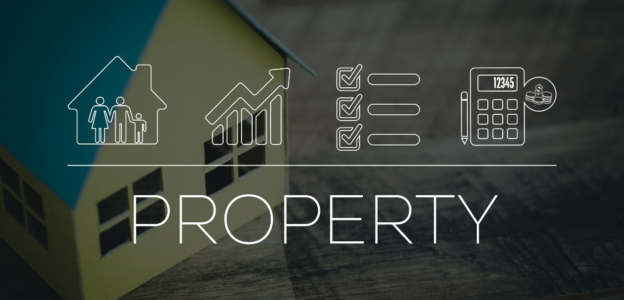As a property manager, you play a vital role in managing and operating various properties. This includes both residential and commercial properties, where effectively handling challenges is key to success in any market condition.
Managing real estate holdings or rental properties can be rewarding, yet it comes with challenges. Whether experienced or new to property management, you will encounter numerous obstacles in managing your rental properties.
Overall, property management is a complex role that demands a wide range of skills and the ability to adapt. Market conditions change, and tenant expectations evolve, presenting continuous property management challenges for managers. This article will explore common challenges and discuss effective strategies for managing and excelling in any market.
What Are the Common Issues in Property Management?

Property management requires balancing tenant satisfaction and profitability, dealing with property management challenges like tenant screening, maintenance, and legal hurdles. Recognizing these issues and implementing expert strategies for a successful property management operation is essential.
A primary challenge in property management is securing reliable tenants who pay rent promptly, maintain the property, and comply with lease terms. These tenants are essential for maintaining cash flow and property value. A thorough screening process compliant with the Fair Housing Act is necessary to avoid discrimination. Properties also require regular and emergency maintenance to keep tenants happy and preserve property value, though these can be costly and time-consuming.
Legal challenges are also common, as property managers must navigate various local, state, and federal regulations related to tenant rights, safety standards, and evictions to prevent legal problems.
Property managers should utilize professional services for effective tenant screening, including comprehensive background checks that adhere to legal standards to ensure a fair process and reduce discrimination risks.
Proactive maintenance through regular inspections and employing a network of reliable contractors can help prevent issues and reduce expenses. Understanding and complying with legal requirements is critical for property managers, who should also pursue ongoing education and legal advice to stay compliant and maintain a professional relationship with tenants.
Overview of Common Problems of Property Management

1) Tenant Turnover and Management:
Property managers have crucial responsibilities for managing tenant relations effectively and maintaining low turnover rates. A rigorous tenant screening process is essential to select financially reliable and responsible tenants. However, challenges such as difficult tenant management can arise even with careful screening. This requires property managers to have strategies to handle disputes and grievances efficiently to maintain harmony and satisfaction.
Keeping open lines of communication and promptly addressing any issues are vital strategies for fostering good relationships and improving tenant retention. Proactively dealing with complaints and repairs can prevent minor issues from escalating into major conflicts.
Moreover, securing dependable tenants is key to the success of your property. Dependable tenants pay rent on time and maintain the property well, which positively affects the property’s value and reduces the likelihood of costly repairs and maintenance issues.
A primary goal for property managers should be to minimize vacancy rates by selecting excellent tenants and managing them effectively, including those who may present challenges. For more detailed strategies on managing difficult tenants and reducing vacancy rates, property managers can refer to comprehensive guides that provide a deeper insight into effective property management techniques.
Solution:
Competitive Pricing: Set competitive rental prices by analyzing the local market to find the appropriate rent level. Incorrect pricing can deter potential tenants or reduce your net operating income (NOI). Proper pricing helps guard against rental scams.
Online Rental Listings: Property management software offers effective avenues for attracting prospective tenants. Ensure your listings are compelling and current, featuring high-quality photos and detailed descriptions of your property’s amenities, location, and rent.
Flexible Leasing Options: Offer flexible lease terms, such as month-to-month agreements, easy lease renewals, and pet-friendly policies, to accommodate a range of tenant needs. Consider alternatives to traditional security deposits to appeal to a broader tenant base, including freelancers and gig workers.
Prompt Communication: Respond promptly to potential tenants’ inquiries and arrange property viewings. Efficient and adaptable communication enhances trust and rapport.
Leveraging Technology: Explore advanced technology solutions available in real estate. Property management software that offers tenant screening services can provide valuable tools at a reasonable cost. These technologies help manage tenant turnover, fill vacancies quickly, prevent evictions and rent defaults through automated payments, and safeguard your rental income.
Thorough Tenant Screening: Conduct comprehensive screenings, including credit, criminal, and eviction checks. Verify potential tenants’ employment and income to ensure affordability. Setting minimum credit scores or income thresholds may also be advisable.
2) Prompt Rent Collection
Timely rent collection is crucial for maintaining a healthy cash flow and ensuring the profitability of your rental property. Delays or failures in rent payment can lead to financial difficulties, affecting your ability to manage maintenance, repairs, and other expenses. Getting all tenants to pay rent on time can be challenging, but establishing effective processes can help achieve regular, punctual payments.
Inconsistent rent collection disrupts cash flow and complicates financial management for property owners. Late or missing payments may occur for various reasons, such as tenants’ financial challenges or confusion over lease agreements.
Solution:
Set Clear Expectations: Setting clear expectations with your renters to facilitate timely rent collection is vital. Ensure your lease agreement spells out the rent due dates, late fees, and acceptable payment methods. Communicate these details to your tenants at the start of their lease and provide reminders as needed.
Offer Convenient Payment Options: Multiple convenient payment options can encourage on-time rent payments. Options include online payments, direct debits, or mobile payments. Ensure these methods are user-friendly and accessible to all tenants, regardless of their tech skills. Offering incentives like a discount for early payment could also be effective.
Send Payment Reminders: Sending reminders about payment due dates can help reduce late or missed payments. Utilize emails, texts, and resident apps to send these reminders a few days before the rent is due and on the due date if the payment still needs to be made. Consider rewards for timely payments, such as rent discounts or gift cards.
Be Proactive with Delinquent Tenants: It is crucial to engage proactively with tenants who fall behind on rent. Contact them early to discuss payment options and resolve any issues. Offering payment plans or similar arrangements can assist tenants in regaining their payment schedule.
Automate Payment With Software: Choose a software platform that meets your needs, considering cost and features. Essential features of rent collection software include providing multiple payment options, such as ACH, credit/debit card payments, e-checks, and cash payments at retail locations. Use the software to automate payment reminders, sending them a few days before and on the rent due date, which can help prevent late payments and remind tenants of their obligations.
3) Repairs and Maintenance:
Property managers must ensure that properties are adequately maintained and that any maintenance or repair issues are addressed swiftly. This involves organizing repair work, scheduling contractors, and managing maintenance budgets.
Establishing a dependable network of vendors and contractors is essential to ensure repairs are completed quickly and competently. Implementing preventive maintenance strategies is also crucial to reduce the need for expensive repairs over time.
Solution:
Create a Maintenance Schedule: Setting up a maintenance schedule is crucial for tracking necessary tasks and ensuring that repairs are completed on time. This helps maintain the property in good condition and keeps tenants satisfied.
Prioritize Repairs: Handle repairs based on their urgency. Immediate issues, such as broken pipes or electrical faults, need quick action, while less urgent matters, like minor cosmetic damages, can be addressed later to save on costs and disruption.
Obtain Multiple Bids: Get multiple bids for repairs, particularly when you need to establish relationships with vendors. This approach allows you to compare costs and ensures you get fair pricing. It can also provide leverage in negotiations for better rates.
Conduct Routine Preventive Maintenance: Regular preventive maintenance is essential to avoid significant breakdowns and costly repairs. This includes cleaning gutters, replacing air filters, and checking for leaks. Such maintenance not only prolongs the lifespan of property assets but also decreases the need for urgent repairs.
Leverage Proptech Apps: Use property management software to streamline maintenance tasks. These applications assist in organizing maintenance schedules, prioritizing repairs, and managing work orders efficiently. Some software also allows contractors to update the repair status in real-time, which improves communication and operational efficiency.
4) Regulatory and Legal Compliance
Keeping abreast of the continuously evolving legal and regulatory landscape is a significant challenge for property managers. This responsibility encompasses understanding fair housing laws, local building codes, and other property-related regulations. Non-compliance can lead to expensive legal disputes and fines. Being well-informed and consulting legal experts are essential for property managers to manage legal and regulatory compliance effectively.
Property owners must stay informed about and comply with legal and regulatory requirements to avoid legal disputes. This involves adhering to local regulations, housing laws, and managing legal risks.
Solution:
Understanding Local Regulations: Local laws can differ widely, encompassing aspects like zoning, rent control, safety standards, and building codes. Failure to comply can lead to fines and legal repercussions.
Stay Updated on Housing Laws: It is crucial to stay current with federal and state laws concerning fair housing, tenant rights, and property conditions to prevent violations.
Seek Professional Support: The complexities of managing legal aspects in property management can be overwhelming. Utilizing professional property management software can help maintain compliance with all legal requirements, thus protecting your investment from potential legal problems. Professional property management software can also assist in ensuring your business adheres to all legal standards, which helps safeguard your investment against possible legal property management challenges.
5) Effective Marketing
Effective marketing and tenant acquisition strategies are crucial for property managers aiming to attract and retain quality tenants, thereby ensuring profitable rental properties. In the context of multi-property management, these strategies become even more significant as they must be scalable and adaptable to different property types and tenant demographics.
Managing multiple properties requires a coordinated approach to marketing and tenant relations to streamline processes and maintain consistency across various locations.
Solution:
Digital Marketing and Online Presence: Leveraging SaaS and integrating it with online platforms is key. This includes creating detailed, attractive listings on popular real estate websites and using SEO tactics to improve the visibility of these listings and monitor through the software. Social media platforms like Facebook and Instagram are also powerful tools for targeting potential tenants through ads that can be customized by demographics such as age, location, and interests.
Engaging Content and Community Events: Producing high-quality, engaging content that resonates with your target audience is essential. This could be through your properties’ blogs, newsletters, and video tours. Hosting community events and property open houses can also significantly enhance visibility and directly engage with potential tenants.
Utilizing Technology: Implementing virtual tours and online viewing options can broaden your reach, allowing prospective tenants to explore properties remotely at their convenience. This approach not only saves time but also caters to the digital preferences of modern consumers.
Local SEO and Community Engagement: Optimizing your online content for local search results can drive more targeted traffic to your properties. Engaging with the community through local events and partnerships with local businesses can also boost your reputation and tenant trust in your management practices.
Performance Tracking and ROI Analysis: Regular analysis of marketing strategies is important to understand their effectiveness. Utilizing tools like Google Analytics to track web traffic and engagement metrics, and calculating the ROI of paid ad campaigns, are practices that help refine marketing efforts and budget allocation.
The Important Role of Property Management Software

Property management software assists landlords and property managers in handling the administrative duties linked to managing rental properties. This software type typically incorporates functions in broad business management software, including financial and banking tools. It also offers specialized features for managing tenants, such as screening processes, marketing and communication tools, insurance requirements, and functionalities for handling leases and inspections.
Property management software significantly enhances the operational capabilities of real estate businesses by offering comprehensive tools for managing a diverse property portfolio. Here’s an expanded view of how this software aids property managers:
Streamlined Property Management:
Property management software provides a centralized system for handling various aspects of property management. This includes not just lease and tenant tracking but also the capability to handle maintenance requests efficiently.
The software allows for the scheduling and tracking of maintenance work, ensuring that property managers can swiftly respond to tenant issues and maintain property conditions, which is crucial for tenant satisfaction and retention.
Efficiency and Automation:
Automation is a key feature of property management software, significantly reducing the burden of manual tasks. The software automates rent collection, financial reporting, and even tenant screening processes. This automation extends to detailed financial management, where property managers can track and forecast budgets and oversee expenses and income through integrated accounting tools, making the management of cash flows more effective.
Enhanced Tenant Experience:
Tenant portals are a standout feature of property management software. They offer tenants 24/7 access to services. Through these portals, tenants can pay rent, submit maintenance requests, and communicate directly with management.
This convenience enhances the tenant experience by making interactions smoother and more responsive. Additionally, property management software often includes communication tools that allow managers to send bulk messages or individual communications efficiently, keeping tenants informed and engaged.
Compliance Management:
Property management software supports robust compliance management by offering tools that streamline the process of meeting regulatory requirements. It automates the generation of compliance reports, maintains an audit trail, and centralizes documentation, which is essential for staying in line with industry standards and local regulations.
This helps organizations reduce the risk of compliance breaches and enhances the reliability of compliance data.
Data-driven Decision-making:
Leveraging the power of data analytics, property management software provides valuable insights that guide strategic decision-making. Managers can use these insights to optimize rental pricing, adjust occupancy rates, and refine investment strategies based on real-time market data and performance analytics.
This capability ensures that decisions are backed by data, which can lead to more precise and strategic operational adjustments.
Scalability and Adaptability:
The software is designed to scale and adapt to the needs of different sizes and types of properties, from single units to large portfolios. This flexibility allows property managers to expand their operations without switching systems, accommodating growth seamlessly. Whether managing a few units or thousands, the software adjusts to varying demands without compromising performance.
Integration with Emerging Technologies:
Advanced property management systems integrate with cutting-edge technologies such as IoT, AI, and blockchain. This integration enhances operational efficiency, boosts security, and fosters innovation.
For instance, IoT can automate energy management and maintenance processes, AI can predict tenant turnover, and blockchain can secure lease agreements and transactions, providing a more dynamic and secure environment for property management.
Tenant Turnover and Lease Management:
The software simplifies the leasing process from start to finish, enhancing tenant onboarding and offboarding procedures. It helps manage applications, screenings, lease agreements, and move-out processes, effectively reducing tenant turnover and vacancy periods.
Property managers can maximize occupancy rates and maintain a stable tenant base by streamlining these processes, which is crucial for maintaining rental income stability.
Risk Mitigation and Opportunity Identification:
Property management software equips managers with real-time insights and predictive analytics, enabling them to foresee and manage potential risks proactively. Real estate risk management technology helps property managers mitigate risks by providing real-time analytics and comprehensive tenant screening processes. These systems enable managers to anticipate issues such as credit risk or property maintenance problems before they escalate.
Leveraging advanced analytics, property management software aids managers in identifying investment opportunities by analyzing market trends and performance metrics. Software solutions offer functionalities that enhance the understanding of market dynamics, helping managers optimize rental pricing and occupancy rates based on data-driven insights.
Conclusion
Navigating the challenges of property management demands a strategic approach and a versatile skill set. Whether dealing with tenant turnover, maintenance issues, or regulatory compliance, each challenge presents an opportunity to refine your management practices and enhance property value.
Effective property management begins with securing reliable tenants through rigorous screening processes and fostering positive tenant relations. Clear communication and proactive maintenance are essential for preserving property integrity and tenant satisfaction. Moreover, staying compliant with legal regulations ensures operational continuity and mitigates risks.
Embracing technology, such as property management software, streamlines administrative tasks and enhances efficiency. These tools automate rent collection, maintenance scheduling, and compliance reporting, freeing up time for more strategic decision-making. By leveraging data analytics, managers can optimize rental pricing and occupancy rates, ensuring financial stability and maximizing returns on investment.
While property management poses multifaceted challenges, adopting proactive strategies and leveraging technological advancements are crucial to success. By continuously adapting to market dynamics and tenant expectations, property managers can navigate challenges effectively and excel in a competitive real estate landscape. Balancing operational excellence with tenant-centric approaches is key to achieving long-term profitability and maintaining property value in any market condition.
Frequently Asked Questions
Common legal challenges include breach of contract, negligence claims, tenant disputes, and fair housing violations. Mitigate these risks by staying informed about laws, seeking legal counsel, using comprehensive lease agreements, screening tenants thoroughly, maintaining property standards, and following proper eviction procedures.
Handle difficult tenants with clear communication, consistent rule enforcement, and proactive conflict resolution. Maintain open lines of communication, apply rules fairly, and address issues promptly, documenting all interactions and resolutions.
Downsides include long hours, high stress, and dealing with difficult clients. Manage these by practicing efficient time management, seeking support from property management services, pursuing professional development, and building a support network with other managers.
Prevent discrimination lawsuits by adhering to fair housing laws and implementing fair, consistent policies. Apply screening criteria uniformly, provide reasonable accommodations for disabilities, and regularly train staff on fair housing laws and best practices.



































